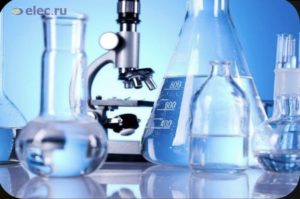- Home
- /
- Body
- /
- Organs at Work
- /
- Where energy come from:...
- /
- Where Energy Come From:...
- 1. The Story of Mitochondria: From Bacteria to Powerhouses
- 2. The Basics of Energy Production
- 3. The Powerhouses of the Cell: Mitochondria
- 4. How Mitochondria Convert Nutrients into ATP
- 5. Factors Affecting Mitochondrial Function
- 6. Role of Genetics and Age in Mitochondrial Function
- 7. Potential Benefits of Supplements for Mitochondrial Support
- 8. The Mitochondrial Theory of Aging
- 9. What Conditions does mitochondria dysfunction lead to
- 9. Research Efforts in Mitochondrial Biology and Aging
Introduction
Fatigue, the silent thief of vitality, can cloak even the brightest day in a veil. We’ve all experienced those moments when energy seems elusive, leaving us drained and struggling to keep pace with life’s demands. But have you ever wondered where this energy comes from, or more importantly, why it sometimes fails us? Delving into the depths of cellular biology reveals a fascinating world where tiny powerhouses called mitochondria hold the key to our energy levels and, surprisingly, even to the aging process.
Powerhouses of the Cell
These remarkable organelles, often famous as the “powerhouses of the cell,” are accountable for converting the nutrients we consume into adenosine triphosphate (ATP), the molecule that fuels cellular processes and provides the energy we need to function. Mitochondria are not only essential for energy production but also is crucial in controlling cell growth, metabolism, and even cell death.
The Link Between Mitochondrial Health and Fatigue
Despite their small size, mitochondria are incredibly dynamic and complex structures that constantly adapt to meet the energy demands of the cell. However, this adaptability also makes them vulnerable to damage from factors such as oxidative stress, inflammation, and genetic mutations. When mitochondria become dysfunctional, they can no longer produce ATP efficiently, driwing to a lower in energy levels and an increase in fatigue.
Exploring the Mitochondrial Theory of Aging
Moreover, emerging research suggests that mitochondrial health may be intricately linked to the aging process. The mitochondrial theory of aging proffers that accumulated damage to mitochondria over time contributes to the aging cause and age-related diseases. This theory highlights the importance of maintaining mitochondrial health not only for combating fatigue but also for promoting longevity and overall healthspan.
In this article, we will explore the basics of energy production, the role of mitochondria in energy metabolism, and how mitochondrial dysfunction can contribute to fatigue. We will also discuss factors that can affect mitochondrial function, like diet, exercise, and stress, and provide practical tips for supporting mitochondrial health. Additionally, we will delve into the mitochondrial theory of aging and its implications for understanding the aging process and potential interventions to promote healthy aging.
Join us as we unravel the mysteries of mitochondria and discover how these tiny organelles hold the key to unlocking boundless energy and vitality, offering new insights into combating fatigue and enhancing our quality of life.
1. The Story of Mitochondria: From Bacteria to Powerhouses
Mitochondria are like tiny power plants inside our cells, but their origin is quite extraordinary. Scientists believe that billions of years ago, these powerhouses were actually bacteria that got inside other cells. Instead of causing harm, these bacteria and cells formed a partnership that helped both survive and thrive.
1.1. How They Got Inside
This ancient partnership likely began when a cell engulfed a bacterium but didn’t digest it. Over time, this bacterium evolved into what we now know as mitochondria. This theory is supported by the fact that mitochondria have their own DNA, much like bacteria.
1.2. Working Together
The relationship between cells and mitochondria became so close that they coevolved, adapting to each other’s needs. Mitochondria produce energy for the cell, and in return, the cell provides a safe home and nutrients.
1.3. Evidence of Their Past
Even today, mitochondria show signs of their bacterial past. They have a double membrane, similar to bacteria, and can reproduce independently within the cell.
1.4. Evolutionary Impact
This partnership was a game-changer in evolution. It allowed cells to become more complex, eventually leading to the development of complex life forms like plants, animals, and humans.
Studying the evolution of mitochondria helps scientists understand how complex life forms evolved and the importance of cooperation in the natural world. It’s a reminder of how even the smallest partnerships can have a big impact on life as we know it.
2. The Basics of Energy Production
Energy is the lifeblood of the body, fueling every cellular process and enabling us to perform the simplest to the most complex tasks. From the beating of our hearts to the firing of neurons in our brains, energy is essential for maintaining health and vitality.
2.1. Role of Energy in the Body’s Functions
a. Cellular Processes
ATP powers a myriad of cellular operations, such as the synthesis of proteins, DNA, and other molecules essential for cell growth and repair. Without ATP, these processes would grind to a halt, compromising cell function and overall health.
b. Muscle Contraction
ATP is crucial for muscle contraction, enabling us to move our bodies and perform physical activities. During muscle contraction, ATP is used to power the movement of muscle fibers, allowing us to lift, push, and pull objects.
c. Nerve Impulse Transmission
ATP plays a vital role in nerve impulse transmission, allowing neurons to communicate with each other and relay information throughout the body. Without ATP, nerve cells would be unable to generate the electrical signals necessary for communication.
d. Maintenance of Ionic Balance
ATP is also involved in maintaining the ionic balance within cells, ensuring that the concentrations of ions such as sodium, potassium, and calcium are regulated. This balance is critical for cell function and maintaining proper cellular hydration.
e. Thermoregulation
ATP is involved in thermoregulation, helping to maintain body temperature within a narrow range. ATP-dependent processes such as muscle contraction and metabolic reactions generate heat, which is essential for supporting body temperature in cold environments.
Overall, energy is indispensable for maintaining the body’s functions and ensuring health and vitality. By understanding the role of ATP in cellular processes, muscle contraction, nerve impulse transmission, and thermoregulation, we can appreciate the importance of energy production in combating fatigue and promoting overall well-being.
2.2. Process of ATP Production and Its Significance
ATP production is a complex process that involves several steps, primarily occurring in the mitochondria. Understanding this process is crucial for grasping the origins of fatigue and how disruptions can conduct to diminished energy levels.
a. Glycolysis
The process begins with glycolysis, which takes place in the cytoplasm of the cell. During glycolysis, glucose is disintegrated into pyruvate, generating a small amount of ATP and NADH.
b. Pyruvate Oxidation
Pyruvate produced from glycolysis enters the mitochondria, where it is converted into acetyl-CoA. This step generates NADH, which carries electrons to the electron transport chain.
c. Citric Acid Cycle
Acetyl-CoA enters the citric acid cycle (also prominent as the Krebs cycle), a series of chemical reactions that produce NADH and FADH2, which also carry electrons to the electron transport chain.
d. Electron Transport Chain (ETC)
The electron transport chain is disposed in the inner mitochondrial membrane. Here, electrons from NADH and FADH2 are passed along a series of protein complexes, leading to the pumping of protons across the membrane.
e. ATP Synthesis
The proton gradient produced by the electron transport chain drives ATP synthesis through ATP synthase. ATP synthase uses the flow of protons back into the mitochondrial matrix to convert ADP and inorganic phosphate (Pi) into ATP.
2.3. Significance of ATP Production
- ATP is the elementary source of energy for cellular processes, making it essential for cell function and survival.
- ATP production is tightly regulated to meet the energy demands of the cell, ensuring that energy is available when needed.
- Disruptions in ATP production, such as mitochondrial dysfunction, can wage to declined energy levels and fatigue.
Understanding the process of ATP production and its significance highlights the critical role of mitochondria in energy metabolism and provides insights into how disruptions in ATP production can contribute to fatigue and other health issues.
3. The Powerhouses of the Cell: Mitochondria
Mitochondria, frequently referred to as the “powerhouses of the cell,” are small, double-membrane-bound organelles discoverd in most eukaryotic cells. These remarkable structures are the primary sites of ATP production in the body, being crucial in energy metabolism and cellular function.
3.1. Structure of Mitochondria
Mitochondria have a unique structure that enables them to carry out their function efficiently. They consist of an outer membrane that surrounds the organelle and an inner membrane that forms numerous folds called cristae. The inner membrane encloses the mitochondrial matrix, where many of the enzymes involved in ATP production are located.
3.2. ATP Production in Mitochondria
The process of ATP production in mitochondria is famous as oxidative phosphorylation. This process includes the transfer of electrons along a series of protein complexes in the inner mitochondrial membrane, famed as the electron transport chain (ETC). As electrons are passed along the ETC, protons are pumped across the inner membrane, creating a gradient. This proton gradient leads the synthesis of ATP by ATP synthase, a complex enzyme embedded in the membrane.
3.3. Significance in Energy Metabolism
Mitochondria is central in energy metabolism by converting the energy stored in nutrients, such as glucose and fatty acids, into ATP. This process, prominent as cellular respiration, provides the energy needed for cellular processes such as muscle contraction, nerve impulse transmission, and protein synthesis.
How is ATP created from fat read in the article: Mysteries of the Keto Diet: Types, Contraindications, and Beyond
3.4. Regulation of Mitochondrial Function
Mitochondria are highly dynamic organelles that can adapt to changing cellular conditions. They are regulated by various factors, including nutrient availability, oxygen levels, and cellular energy demands. Disruptions in mitochondrial function can lead to decreased ATP production and contribute to fatigue and other health issues.
By introducing mitochondria as the organelles responsible for energy production, we begin to appreciate their vital role in cellular function and energy metabolism. Understanding how mitochondria produce ATP provides insights into the origins of fatigue and how disruptions in mitochondrial function can influence our energy levels and general health.
4. How Mitochondria Convert Nutrients into ATP
Mitochondria are remarkable organelles that convert the energy stored in nutrients into ATP through a process known as oxidative phosphorylation. This process involves several key steps that are essential for ATP production and cellular energy metabolism.
4.1. Electron Transport Chain (ETC)
The electron transport chain is a series of protein complexes dituated in the inner mitochondrial membrane. These complexes work together to transfer electrons from NADH and FADH2, generated from the breakdown of nutrients, to oxygen. This transfer of electrons creates a proton gradient across the inner mitochondrial membrane.
4.2. Proton Gradient
The proton gradient produced by the electron transport chain is a critical component of oxidative phosphorylation. This gradient represents a form of potential energy that is used to drive ATP synthesis.
4.3. ATP Synthase
ATP synthase is a complex enzyme located in the inner mitochondrial membrane. It utilizes the energy from the proton gradient to convert ADP (adenosine diphosphate) and inorganic phosphate (Pi) into ATP through a process known as chemiosmosis.
4.4. ATP Production
As protons flow back into the mitochondrial matrix through ATP synthase, the enzyme catalyzes the phosphorylation of ADP to ATP. This process is highly efficient, allowing mitochondria to generate large amounts of ATP from a single molecule of glucose.
4.5. Regulation of Oxidative Phosphorylation
The process of oxidative phosphorylation is tightly regulated to ensure that ATP production matches the energy demands of the cell. Factors such as nutrient availability, oxygen levels, and the cellular energy state can all influence the rate of oxidative phosphorylation.
By understanding how mitochondria convert nutrients into ATP through oxidative phosphorylation, we gain insight into the complex process of energy production in the body. This process is essential for maintaining cellular function and overall health, highlighting the critical role of mitochondria as the powerhouses of the cell.
5. Factors Affecting Mitochondrial Function
Mitochondrial health is influenced by various lifestyle factors, including diet, exercise, and stress. These factors can have profound effects on mitochondrial function, ultimately affecting energy production and contributing to fatigue.
5.1. Diet
A harmonious diet abundant in nutrients is crutial for supporting mitochondrial health. Nutrients such as coenzyme Q10, L-carnitine, and antioxidants (e.g., vitamins C and E) play crucial roles in mitochondrial function. Conversely, a diet high in processed foods, sugar, and unhealthy fats can lead to mitochondrial dysfunction and impaired energy production.
5.2. Exercise
Regular physical activity is notorious to enhance mitochondrial health. Exercise increases the number and efficiency of mitochondria in muscle cells, enhancing their ability to produce ATP. Additionally, exercise promotes mitochondrial biogenesis, the process by which new mitochondria are created, further enhancing energy production.
5.3. Stress
Chronic stress can negatively sway mitochondrial function. Stress hormones such as cortisol can disrupt mitochondrial membranes and impair ATP production. Chronic stress can also drive to oxidative stress, a condition in which there is an imbalance between the creation of reactive oxygen species (ROS) and antioxidant defenses, further damaging mitochondria.
5.4. The Sleep
Adequate sleep is essential for mitochondrial health. During sleep, the body repairs and regenerates mitochondria, ensuring optimal function. Chronic sleep deprivation can disrupt mitochondrial biogenesis and lead to mitochondrial dysfunction.
5.5. Environmental Factors
Environmental factors like pollution, radiation, and toxins can also affect mitochondrial health. These factors can increase oxidative stress and injure mitochondria, leading to impaired ATP production.
By understanding the impact of lifestyle factors on mitochondrial health, we can make informed choices to support mitochondrial function and combat fatigue. Adopting a healthy diet, engaging in regular exercise, managing stress, and prioritizing sleep are all significant steps in maintaining optimal mitochondrial health and overall well-being.
6. Role of Genetics and Age in Mitochondrial Function
Genetics and age play significant roles in determining mitochondrial function, influencing energy production and the onset of fatigue.
6.1. Genetics
Genetic factors can influence mitochondrial function and contribute to variations in energy levels among individuals. Mutations in genes encoding mitochondrial proteins can lead to mitochondrial dysfunction, impairing ATP production and increasing the risk of fatigue-related conditions. Additionally, variations in genes embrace in mitochondrial biogenesis and oxidative stress response can influence mitochondrial health and energy metabolism.
6.2. Age
Mitochondrial function tends to decline with age, a process known as mitochondrial aging. As we age, mitochondria become less efficient in producing ATP, leading to lowered energy levels and increased susceptibility to fatigue. Mitochondrial aging is thought to be driven by a combination of factors, including accumulation of damage to mitochondrial DNA, alterations in mitochondrial protein expression, and impaired mitochondrial quality control mechanisms.
6.3. Mitochondrial DNA (mtDNA)
Mitochondria have their own DNA, separate from the nuclear DNA found in the cell’s nucleus. Mutations in mtDNA can affect mitochondrial function and contribute to mitochondrial diseases, which are characterized by impaired ATP production and energy metabolism. These mutations can be inherited or arise spontaneously and can impact energy levels and fatigue.
6.4. Hormonal Influence
Hormones are crucial in controlling mitochondrial function. For example, thyroid hormones are essential for mitochondrial biogenesis and ATP production, while cortisol can impact mitochondrial membrane integrity and function. Changes in hormone levels, such as those associated with aging or hormonal disorders, can affect mitochondrial function and energy metabolism.
Understanding the role of genetics and age in mitochondrial function provides insights into the intricate interplay between genetic factors, aging, and mitochondrial health. By addressing these factors through lifestyle modifications, supplementation, and targeted therapies, it may be possible to support mitochondrial function, enhance energy production, and mitigate the impact of fatigue.
7. Potential Benefits of Supplements for Mitochondrial Support
Supplements can play a role in supporting mitochondrial health and combating fatigue. While it’s important to consult with a healthcare professional before starting any new supplements, several have shown promise in supporting mitochondrial function and energy production.
7.1. Coenzyme Q10 (CoQ10)
CoQ10 is a powerful antioxidant that plays a crucial role in mitochondrial function. It helps shuttle electrons along the electron transport chain, supporting ATP production. Supplementing with CoQ10 may help enhance mitochondrial function and combat fatigue, especially in individuals with CoQ10 deficiency.
7.2. L-Carnitine
L-Carnitine is an amino acid that plays a key role in mitochondrial energy metabolism. It helps transport fatty acids into the mitochondria, where they can be used as a fuel source for ATP production. Supplementing with L-Carnitine may help support mitochondrial function and improve energy levels, particularly in individuals with carnitine deficiency.
7.3. Alpha-Lipoic Acid (ALA)
ALA is a powerful antioxidant that plays a role in mitochondrial energy production. It helps regenerate other antioxidants, such as vitamins C and E, and supports mitochondrial function. Supplementing with ALA may help protect mitochondria from oxidative damage and improve energy production.
7.4. Magnesium
Magnesium is a mineral that is essential for mitochondrial function. It plays a role in ATP production and helps regulate mitochondrial calcium levels. Supplementing with magnesium may help support mitochondrial health and improve energy levels, especially in individuals with magnesium deficiency.
7.4. B Vitamins
B vitamins, including B1 (thiamine), B2 (riboflavin), B3 (niacin), B5 (pantothenic acid), B6 (pyridoxine), B7 (biotin), and B12 (cobalamin), are essential for mitochondrial function. They play a role in ATP production and energy metabolism. Supplementing with B vitamins may help support mitochondrial health and improve energy production, especially in individuals with B vitamin deficiencies.
While supplements can be beneficial for supporting mitochondrial health and combating fatigue, it’s significant to use them judiciously and under the guidance of a healthcare professional. A balanced diet, regular exercise, stress management, and adequate sleep are also essential for supporting mitochondrial health and overall well-being.
8. The Mitochondrial Theory of Aging
The mitochondrial theory of aging proposes that accumulated damage to mitochondria over time contributes to the aging process and age-related diseases. Several factors can lead to damage to mitochondria, including oxidative stress, mitochondrial DNA mutations, and impaired mitochondrial quality control mechanisms.
8.1. Oxidative Stress
Mitochondria are a major source of reactive oxygen species (ROS), which are natural byproducts of ATP production. While ROS play a role in cell signaling and immune defense, excessive ROS can damage mitochondria and other cellular components. Over time, accumulated oxidative damage can impair mitochondrial function and contribute to the aging process.
8.2. Mitochondrial DNA Mutations
Mitochondria have their own DNA (mtDNA), which is more vulnerable to damage than nuclear DNA. Mutations in mtDNA can accumulate over time, leading to mitochondrial dysfunction. This can further increase ROS production and oxidative damage, creating a vicious cycle of mitochondrial dysfunction and aging.
8.3. Impaired Mitochondrial Quality Control
Mitochondria have quality control mechanisms that help maintain their function and integrity. These mechanisms include mitochondrial biogenesis (the formation of new mitochondria), mitophagy (the removal of damaged mitochondria), and mitochondrial fusion and fission (processes that maintain mitochondrial shape and function). As we age, these quality control mechanisms can become less efficient, leading to the accumulation of damaged mitochondria.
8.4. Impact on Aging and Age-Related Diseases
The accumulation of damage to mitochondria over time can contribute to the aging process and increase the risk of age-related diseases. Mitochondrial dysfunction has been implicated in a wide range of conditions, including neurodegenerative diseases, cardiovascular diseases, and metabolic disorders. By understanding the role of mitochondrial damage in aging and disease, researchers hope to develop interventions to slow down the aging process and prevent age-related diseases.
About other theories of aging read the article: Geroprotectors: The Secrets to Healthy Aging
By addressing factors that contribute to mitochondrial damage, such as oxidative stress and impaired mitochondrial quality control mechanisms, it may be possible to support mitochondrial health and potentially slow down the aging process. Strategies such as antioxidant supplementation, regular exercise, and calorie restriction have been proposed as ways to support mitochondrial function and promote healthy aging.
9. What Conditions does mitochondria dysfunction lead to
Mitochondrial dysfunction can have far-reaching effects on cellular function and contribute to the development of various conditions, including neurodegenerative diseases, cardiovascular diseases, and metabolic disorders. Understanding how mitochondrial dysfunction impacts these conditions sheds light on the broader implications of mitochondrial health.
9.1. Neurodegenerative Diseases
Mitochondrial dysfunction is implicated in the pathogenesis of neurodegenerative diseases such as Alzheimer’s disease, Parkinson’s disease, and amyotrophic lateral sclerosis (ALS). In these conditions, impaired mitochondrial function can lead to energy deficits in neurons, oxidative stress, and the accumulation of damaged proteins, contributing to neuronal degeneration.
8.2. Cardiovascular Diseases
Mitochondrial dysfunction is also linked to cardiovascular diseases such as heart failure, ischemic heart disease, and atherosclerosis. Impaired mitochondrial function in cardiac muscle cells can lead to energy deficits, impaired contractility, and increased susceptibility to cell death, contributing to the development of these conditions.
8.3. Metabolic Disorders
Mitochondrial dysfunction plays a role in the development of metabolic disorders such as type 2 diabetes and obesity. Impaired mitochondrial function in insulin-responsive tissues such as muscle and liver can lead to insulin resistance, impaired glucose metabolism, and dysregulation of lipid metabolism, contributing to the development of these conditions.
8.4. Aging
Mitochondrial dysfunction is considered a hallmark of aging and is thought to contribute to age-related decline in cellular function and tissue function. Accumulated damage to mitochondria over time can impair cellular energy production, increase oxidative stress, and contribute to the aging process and the development of age-related diseases.
By understanding how mitochondrial dysfunction contributes to the development of various conditions, researchers hope to develop strategies to support mitochondrial health and potentially mitigate the impact of these conditions. Strategies such as antioxidant supplementation, lifestyle modifications, and targeted therapies aimed at improving mitochondrial function are areas of active research in the field of mitochondrial biology and aging.
9. Research Efforts in Mitochondrial Biology and Aging
Researchers around the world are actively investigating various aspects of mitochondrial biology and aging to better understand the role of mitochondria in the aging process and age-related diseases. Some of the key areas of research include:
9.1. Mitochondrial Quality Control
Scientists are studying the mechanisms that regulate mitochondrial quality control, including mitophagy (the removal of damaged mitochondria) and mitochondrial biogenesis (the formation of new mitochondria). Understanding these mechanisms could lead to strategies to enhance mitochondrial quality control and prevent the accumulation of damaged mitochondria.
9.2. Mitochondrial Dynamics
Research is ongoing into the processes of mitochondrial fusion and fission, which are essential for maintaining mitochondrial function and morphology. Dysregulation of these processes has been implicated in various age-related diseases, and researchers are exploring ways to modulate mitochondrial dynamics to promote healthy aging.
9.3. Mitochondrial DNA Maintenance
Scientists are investigating the mechanisms that maintain mitochondrial DNA (mtDNA) integrity and repair mtDNA damage. Disruptions in mtDNA maintenance can lead to mitochondrial dysfunction and contribute to the aging process, so understanding these mechanisms could offer new insights into preventing age-related mitochondrial dysfunction.
9.4. Mitochondrial-Targeted Therapies
Researchers are exploring the development of therapies that specifically target mitochondria to enhance their function and mitigate age-related damage. These therapies could include antioxidants that specifically target mitochondria, as well as compounds that promote mitochondrial biogenesis and function.
9.5. Biomarkers of Mitochondrial Function
Scientists are working to identify biomarkers that can be used to assess mitochondrial function in living organisms. These biomarkers could provide valuable insights into mitochondrial health and aging and could be used to monitor the effectiveness of interventions aimed at improving mitochondrial function.
By advancing our understanding of mitochondrial biology and aging, researchers hope to develop new strategies to maintain mitochondrial health, enhance energy production, and promote healthy aging. Ongoing research efforts in this field hold promise for unlocking new insights into the origins of fatigue and age-related diseases, ultimately improving the quality of life for people as they age.
Including this section on the mitochondrial theory of aging provides a holistic view of mitochondria’s role not only in energy production and fatigue but also in the broader context of aging and age-related diseases, further emphasizing the importance of maintaining mitochondrial health throughout life.
Conclusion
In conclusion, the origins of fatigue are deeply rooted in the complex processes of energy production within our cells, particularly in the mitochondria, the powerhouses of the cell. Mitochondria play a central role in converting the nutrients we consume into adenosine triphosphate (ATP), the molecule that fuels our cellular processes and provides us with the energy we need to function.
However, mitochondrial health is not only crucial for combating fatigue but also for supporting overall health and well-being. Disruptions in mitochondrial function can contribute to a range of conditions, including neurodegenerative diseases, cardiovascular diseases, and metabolic disorders. By understanding the factors that impact mitochondrial function, such as diet, exercise, stress, genetics, and age, we can take proactive steps to support mitochondrial health and optimize energy production.
Ongoing research in mitochondrial biology and aging is providing new insights into the role of mitochondria in the aging process and age-related diseases. By continuing to explore these areas, researchers hope to develop new strategies and therapies to support mitochondrial health and promote healthy aging.
Incorporating lifestyle changes such as a balanced diet, regular exercise, stress management, and adequate sleep can all help support mitochondrial health and combat fatigue. Additionally, supplements and targeted therapies aimed at improving mitochondrial function show promise in supporting overall health and well-being.
By taking a holistic approach to mitochondrial health, we can unlock the secrets to boundless energy and vitality, ensuring that we can live our lives to the fullest.
































































0 Comments